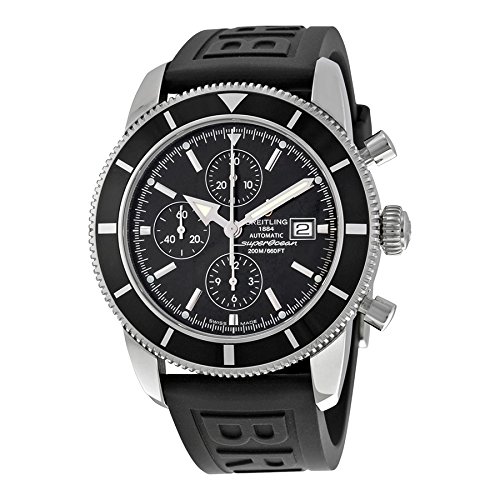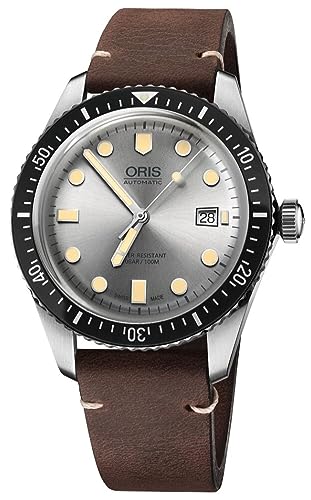This step-by-step guide will help you choose the ideal diver’s watch for your underwater adventures. It covers the key factors to consider, ensuring you make an informed decision that meets your needs and preferences.
Top Dive Timepieces
Determine your budget
Set a budget range that you are comfortable with. Determine the maximum amount you are willing to spend on a diver’s watch. This will help you narrow down your options and focus your search on watches within your price range. Consider your financial situation and what you are comfortable spending on a watch. Remember to be realistic about the cost of a quality diver’s watch, as they can vary significantly in price. By setting a budget range, you can avoid spending more than you can afford and make an informed decision when purchasing your watch.
Water resistance rating
Check the water resistance rating of the watch. This is crucial, especially if you plan on using it for diving. For diving purposes, ensure that the watch has a minimum water resistance rating of 200 meters (660 feet). This level of resistance is necessary to withstand the immense pressures experienced during deeper dives.
To determine the water resistance rating of a watch, refer to the manufacturer’s specifications or markings on the watch itself. Look for indicators such as “WR200” or “Water Resistant 200m,” which suggest that the watch is suitable for diving. Keep in mind that not all water-resistant watches are suitable for scuba diving. Therefore, it is essential to check if the watch is specifically designed for diving and has been tested to meet international standards.
For instance, reputable diver’s watches like the Rolex Submariner or the Omega Seamaster are renowned for their water resistance capabilities. These watches undergo rigorous testing to ensure they can withstand the demanding conditions of underwater exploration.
By checking the water resistance rating and ensuring the watch is specifically designed for diving, you can confidently rely on your watch during your underwater adventures without worrying about water damage.
Bezel functionality
Consider the functionality of the bezel. When choosing a diver’s watch, it is essential to pay attention to the bezel’s features. Firstly, ensure that the bezel is easy to grip, allowing you to effortlessly rotate it even when wearing gloves or underwater. This will enable you to accurately measure elapsed time during your dives. Additionally, make sure the bezel rotates smoothly, without any resistance or stiffness, ensuring easy maneuverability. Moreover, the bezel should have clear and distinct markings, making it easy to read and ensuring precise timekeeping while underwater. By considering these aspects, you can select a watch with a bezel that enhances your diving experience.
Luminosity and readability
Evaluate the watch’s luminosity and readability by following these steps:
- Check the contrast: Look for a watch with high contrast between the dial and the indexes. The greater the contrast, the more easily readable the watch will be underwater. For example, choose a watch with a black dial and white indexes or vice versa.
- Inspect the dial indexes: Ensure that the dial indexes are easily readable, preferably with Arabic numerals or large hour markers. Avoid watches with cluttered or small indexes that may be difficult to see in dimly lit conditions.
- Consider luminescent material: Opt for a watch that has hands coated with luminescent material, such as Super-LumiNova or Tritium. This material absorbs light and then emits it slowly, allowing the watch’s hands to glow in darker environments. Examples include watches like the Seiko Prospex SRP777 with its luminescent hands or the Luminox Navy SEAL with its self-illuminating Tritium markers.
- Test readability in low-light: Before wearing your watch underwater, make sure to assess its readability in low-light conditions. Step into a dimly lit room or place the watch under a flashlight to verify that the hands and dial indexes are easily visible. If the watch meets your requirements, it is likely to perform well in limited underwater visibility situations.
Remember, great luminosity and readability ensure that you can read the time at a glance, allowing you to stay safe and on schedule during your underwater activities.
Strap or bracelet
- Determine your style and intended use for the watch strap or bracelet.
- Assess the comfort factor and suitability for wet conditions by considering rubber straps.
- Look into durability and a more formal look with stainless steel bracelets.
- Choose the option that aligns best with your preferences and needs.
Movement type
- Determine your preference: Begin by considering what you value most in a watch – accuracy, reliability, or traditional craftsmanship.
- Assess accuracy, go for quartz: If precise timekeeping is crucial to you, opt for a quartz movement diver’s watch. Quartz watches are known for their unparalleled accuracy, ticking away with a minimal deviation of only a few seconds per month. Moreover, they require less maintenance as they usually have a battery that needs replacement every few years.
- Embrace traditional charm with mechanical: If you appreciate the artistry and craftsmanship behind a timepiece, mechanical movement diver’s watches are your go-to. Within this category, you have the choice between automatic or manual winding watches. Automatic watches self-wind through the natural motion of your wrist, while manual winding watches require regular manual winding to keep them powered. While mechanical watches may not match the accuracy of their quartz counterparts, their appeal lies in the intricate mechanisms at work, offering a visual spectacle of precision engineering.
- Make your selection: Consider your preferences, weighing the importance of accuracy against the allure of traditional watchmaking. Once you’ve determined your preference, choose the appropriate movement type for your diver’s watch – whether quartz or mechanical (automatic or manual winding).
Remember, selecting the suitable movement type for your diver’s watch ensures you find a timepiece that aligns perfectly with your needs and preferences, providing both functionality and a touch of personal style.
Brand reputation and warranty
Research the brand reputation and warranty: First, conduct thorough research on the brand of the watch you are interested in. Look for brands that have a long-standing reputation for quality and reliability. Read customer reviews and ratings to gauge the overall satisfaction with the brand.
Opt for reputable brands known for their quality and reliability: Choose a brand that is well-regarded in the industry and has a history of producing high-quality products. Look for brands that are known for their attention to detail, craftsmanship, and use of durable materials.
Check if the watch comes with a warranty that covers manufacturing defects and malfunctions: Ensure that the watch you are considering purchasing comes with a warranty. Read the warranty terms carefully to understand what is covered and for how long. Look for warranties that specifically mention coverage for manufacturing defects and malfunctions.
A reliable warranty ensures peace of mind and protects your investment: Having a reliable warranty will give you peace of mind knowing that you are protected against any potential issues with your watch. It also demonstrates the brand’s confidence in their product. Remember that a watch is an investment, and a comprehensive warranty can safeguard your investment for years to come.
Making the right choice
To conclude, selecting a diver’s watch requires careful evaluation of various factors such as price, water resistance, bezel functionality, visibility, strap material, movement type, and brand reliability. By following these guidelines, you can make an educated choice and discover a diver’s watch that fulfills your needs for functionality, endurance, and fashion. Enjoy your diving adventures with confidence!
Expert Advice
A Comprehensive Guide to Your Dive Watch – 5 Important Things to Know in 2021
Instructions for Operating Diver’s Watches
- Familiarize yourself with the basic features: Start by understanding the key components of a diver’s watch, including the bezel, crown, dial, and bracelet. Research the specific functions and features of your particular watch model, paying attention to water resistance ratings and depth limits
- Perform a water resistance check: Before taking your diver’s watch for a dive, ensure it is water-resistant by performing a water resistance check. Follow the manufacturer’s guidelines, which may involve verifying the crown is screwed down tightly or performing a water immersion test
- Learn how to set the bezel: Diver’s watches often come with a unidirectional rotating bezel. This bezel can be used to keep track of elapsed time underwater. Familiarize yourself with the correct usage and learn how to set it before diving, ensuring you align the bezel with the minute hand
- Practice using the crown: The crown is an essential part of a diver’s watch as it controls functions like time adjustment, date change, and winding the watch. Take some time to practice using the crown, understanding how to pull it out, adjust the time or date, and push it back in securely
- Rinse and maintain your watch: After any dive, rinse your diver’s watch with freshwater to remove any salt or chlorine. Dry the watch properly to prevent moisture build-up. Regularly service the watch, adhering to the manufacturer’s instructions to keep it in optimal working condition
Frequently Asked Questions about Diver’s Watches
Are there specific certifications or testing standards that diver’s watches must meet to ensure their reliability underwater?
Yes, there are specific certifications and testing standards that diver’s watches must meet to ensure their reliability underwater. The most widely recognized certification for diver’s watches is ISO 6425, which sets the minimum requirements for a timepiece to be considered suitable for diving. To meet this standard, a diver’s watch must undergo various tests, including water resistance, resistance to magnetic fields, shock resistance, legibility in darkness, and the presence of a unidirectional rotating bezel. Additionally, some diver’s watches may also be certified by other organizations such as COSC (Contrôle Officiel Suisse des Chronomètres) or the Swiss Federal Institute of Metrology (METAS) to guarantee their accuracy and precision. These certifications and testing standards are crucial in ensuring that diver’s watches are reliable and safe for use underwater.

















